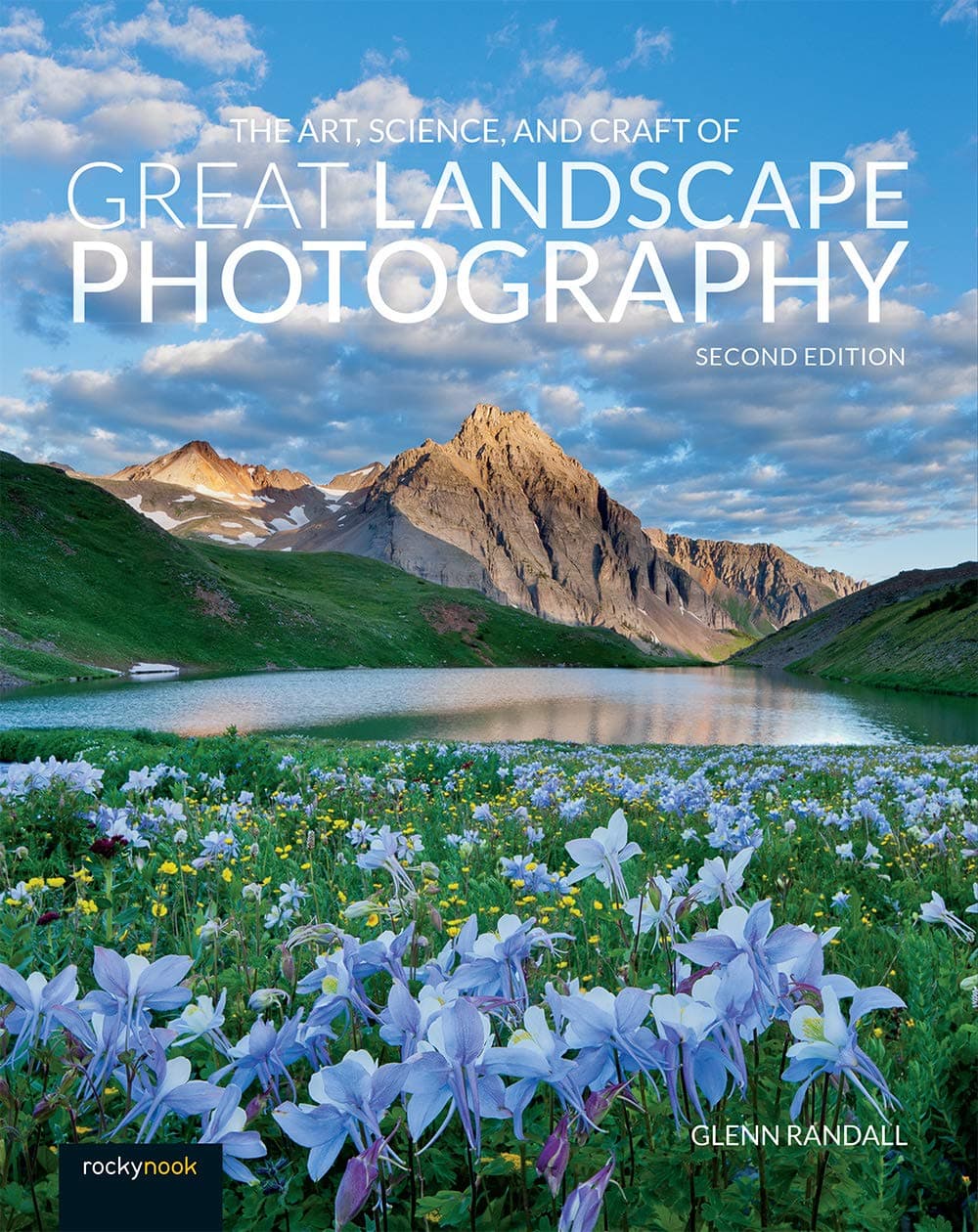
The Art Science and Craft of Great Landscape Photography
By: Glenn Randall
Category: Photography
Finished:
Highlights
For scouting, look for areas with a compelling foreground that integrates seamlessly with a strong mid-ground and background.
The wind is often calmest right at sunrise.
The smaller the body of water, the better the chance of a perfect reflection.
For searching for flowers, density trumps breadth. A small dense patch is better than an expansive less dense grouping.
Most good landscape photographs are made early or late in the day (blue/golden hours).
Lighting:
- Frontlighting, where the light comes from behind you, will make the subject look flat.
- Sidelighting better reveals the contours of the land.
- Backlight, with the light behind the subject, can add drama by rimlighting your subject.
- The best “glow” lighting typically occurs 15-30 minutes before sunrise or after sunset.
Rainbows:
- They can only appear when the sun’s elevation is below 42* off the horizon.
- To predict a rainbow, face your shadow, and put your hands out in front of you with thumbs touching and your left pinky in your shadow’s head.
Composition:
- Decide what elements you want to include in the scene and exclude everything else, get close and keep it simple.
- Most beginners make the mistake of including too much irrelevant clutter around the main subject.
- Don’t un-center the subject just to play by the rules, make it make sense. If there’s no reason, then make it a full-frame shot.
- Another beginner’s mistake is to allow some distracting trivia into the shot. Watch out for branches and such, check your edges!
- Context is also important: A very tall peak can be helped by having some of the shorter peaks around it.
- Typically don’t put the horizon right in the middle, either ⅔ sky or ⅔ land.
- Using a wide angle lens with flowers right in front of you will help enhance the depth of the field.
Focus Stacking
- To create an image nicely focused throughout the frame when you have something really close and some stuff really far… take a few photos on a tripod at different focuses then consult the book for combining them.
Rembrandt Solution for difficult lighting
- Take one photo exposed for highlights, and one photo exposed for shadows
- Keep the aperture and ISO consistent, just change the shutter speed
- Check the book for combining photos
High Contrast Situations
- Take three photos, one normal, one at +2, one at -2, and combine in photoshop according to the book
Panoramas
- You can combine photos in photoshop, just be sure the exposure settings are all the same. You need the camera in manual mode to keep it consistent.
Night Sky Photos
- Consult the book for editing
- Basic settings: 30s f/2.8 ISO 6400
Eyes will first go to the lightest tones of a photograph.
Old saying: “A $10 photographer scenes a scene they like and takes a picture. A $100 photographer moves three steps to the left first. A $1,000 photographer moves three steps to the left and one back to the right.”

